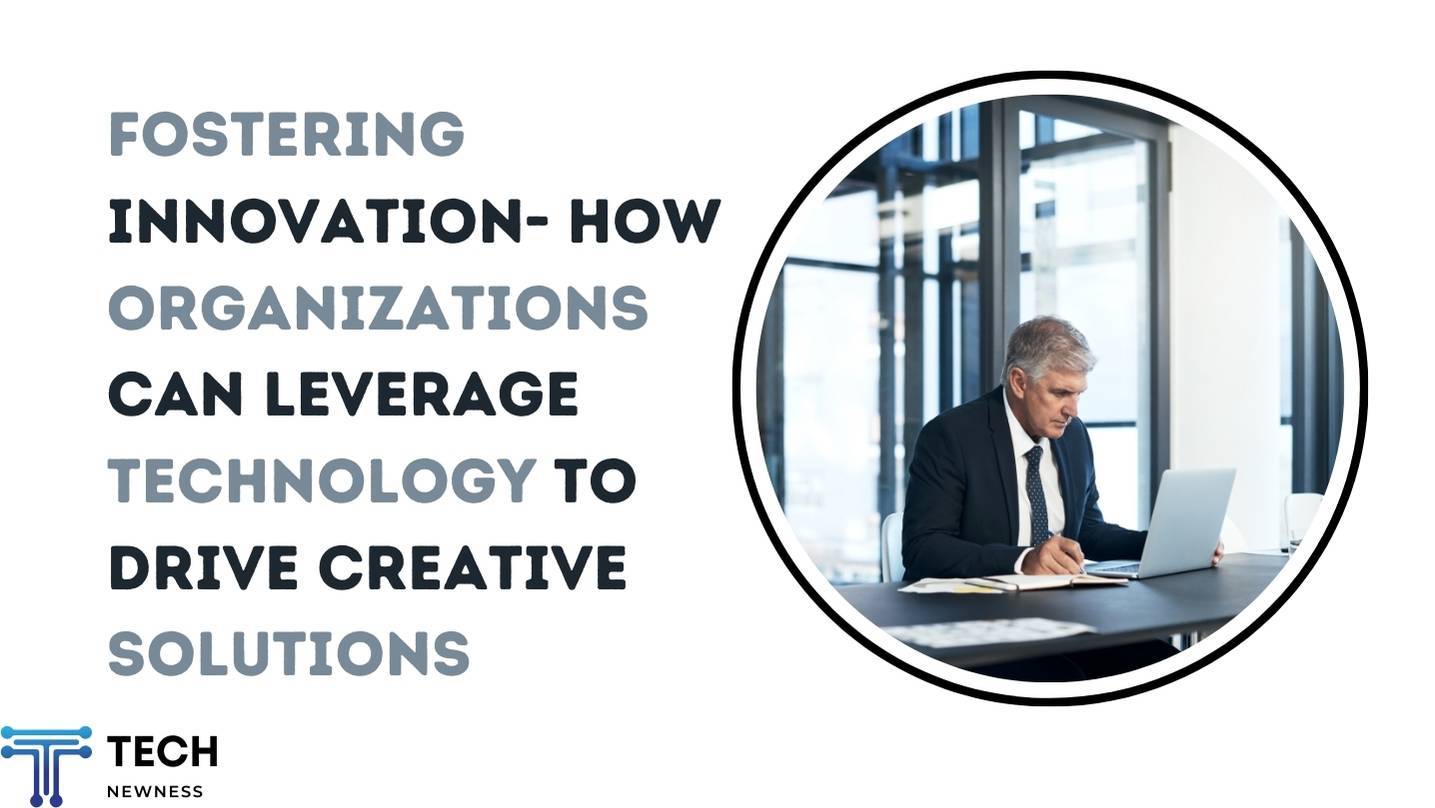Innovation is what keeps organizations ahead of the curve. In today’s competitive market, fostering a culture of creativity is crucial for staying relevant and thriving. One of the most effective ways to achieve this is through leveraging technology. Momentum in enterprise technology adoption is growing, with cloud and edge computing leading at 48%, followed by advanced connectivity at 37%, generative AI at 36%, and applied AI at 35%.
Technology has the power to turn good ideas into great solutions. From accelerating product development to offering insights that result in new approaches, technology helps organizations transform their visions into reality.
This article explores how businesses can use various technologies to drive creative solutions and foster an environment where innovation thrives.
Table of Contents
Encouraging Collaboration with Digital Platforms
Collaboration is key to fostering innovation. Digital platforms, such as project management tools, communication apps, and virtual brainstorming boards, help teams work together seamlessly. Such platforms make it easy for people to share ideas, no matter where they are. They also provide a space for everyone to contribute so that diverse perspectives come together to solve problems. This diversity in thought often leads to creative solutions that might not emerge when working in isolation.
The use of collaboration tools has become even more essential with the rise of remote and hybrid work. Digital platforms make it possible for team members from different locations and time zones to contribute equally. They bring people together, encourage open communication, and help create an environment where creativity can flourish.
Accelerating Development with LCNC Tools
Innovation often relies on how quickly an idea can be brought to life. Traditional pro code development requires a lot of specialized skills, meaning that only experienced developers can work on building solutions. Resultantly, this slows down the creative process, especially when there are bottlenecks in the availability of technical talent. When ideas take too long to develop, organizations risk missing out on opportunities to be first to market or to respond to changing needs.

Low-code and no-code tools offer a much-needed alternative. These platforms allow non-developers to contribute to app development, empowering more people within the organization to create and experiment. It opens up new possibilities for rapid prototyping and testing; this way, teams can try out ideas without a lengthy development cycle. With low-code and no-code, innovation becomes a shared responsibility, fostering creativity at all levels of the business and speeding up the process from idea to execution.
Using Artificial Intelligence for Insights
Data is one of the most valuable resources for driving innovation, but without the right tools, it’s easy to get overwhelmed by the sheer volume of information. Artificial intelligence (AI) helps businesses make sense of their data by analyzing trends and providing actionable insights. According to 54% of company executives, integrating AI into their business has led to a significant boost in productivity. AI tools can predict customer behavior, identify inefficiencies, and even suggest new opportunities that might have been missed. These insights can inspire creative approaches and help teams make informed decisions.
AI is also useful for speeding up research and development processes. For example, AI can help simulate different scenarios or test product features before they are launched. In turn, this reduces the time needed for experimentation and encourages innovation by providing quick feedback. AI-driven insights allow businesses to stay agile, adapt to market changes, and keep coming up with new ideas to improve their products and services.
Automating Repetitive Tasks
Many employees spend a significant amount of their day on repetitive tasks that, while necessary, do not add much value in terms of innovation. Automation technology helps tackle this problem. By automating routine tasks, such as data entry, report generation, and scheduling, employees are freed from the burden of mundane work. This way, they can focus their time and energy on activities that require creativity and out-of-the-box thinking.

When people are not burdened with repetitive tasks, they have more time to contribute to brainstorming and problem-solving sessions. Automation creates space for employees to explore new ideas, take on challenging projects, and collaborate with others to develop innovative solutions. As a result, organizations benefit from a more engaged and creative workforce that drives the business forward.
Creating Flexible Work Environments
Innovation often requires flexibility. Cloud technology provides organizations with the tools they need to create a more adaptable work environment. With cloud-based systems, employees can access information, software, and resources from anywhere, and this way, it becomes easier to collaborate and stay productive regardless of location. This kind of flexibility encourages creativity, as it allows people to work in ways that best suit their needs.
A flexible work environment also promotes a better work-life balance, which can result in more inspired thinking. Employees who have control over how and where they work are often more motivated and open to exploring new ideas.
Leveraging Virtual Reality and Augmented Reality
Virtual Reality (VR) and Augmented Reality (AR) have become powerful tools for fostering innovation in product development. These technologies allow teams to create virtual prototypes, visualize new concepts, and interact with them before anything is physically built. VR and AR make it possible to identify potential issues and refine designs early in the development process, which saves time and resources.

The ability to visualize and experiment with ideas in a virtual space encourages creativity. Designers, engineers, and stakeholders can collaborate more effectively, seeing exactly how a product will look and function before it goes into production.
Exploring Emerging Technologies
Technologies like blockchain, the Internet of Things (IoT), and edge computing offer unique opportunities for innovation. For example, IoT devices can collect data that provides insights into how products are used. This way, companies can make improvements that better serve customers’ needs.
Organizations willing to experiment with new technologies are often the ones that lead their industries. Trying out new tools and concepts helps businesses discover creative solutions that set them apart from the competition. It also sends a message to employees and customers that the company is committed to growth, change, and innovation.
Leveraging technology is key to fostering a culture of innovation within an organization. Whether it’s speeding up development with low-code tools, encouraging collaboration through digital platforms, or exploring new technologies like AI, VR, and AR, technology plays a central role in driving creative solutions. This way, businesses create an environment where employees are free to think creatively, experiment with new ideas, and work flexibly. Using advanced technology is what keeps organizations not only competitive but also at the forefront of their industries, ready to tackle the challenges of tomorrow.
Leveraging technology is key to fostering a culture of innovation within an organization. Whether it’s speeding up development with low-code tools, encouraging collaboration through digital platforms, utilizing talent acquisition software to streamline hiring for innovative teams, or exploring new technologies like AI, VR, and AR, technology plays a central role in driving creative solutions. This way, businesses create an environment where employees are free to think creatively, experiment with new ideas, and work flexibly. Using advanced technology is what keeps organizations not only competitive but also at the forefront of their industries, ready to tackle the challenges of tomorrow.
See Also: Numberlina.com General: An Ultimate Hub for News and Info





